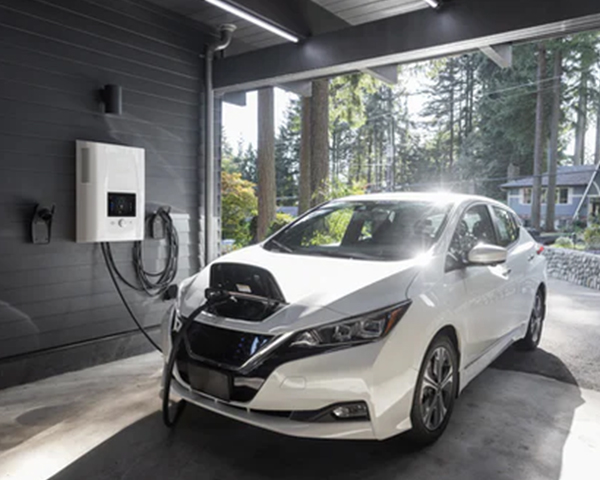As electric vehicles (EVs) continue to rise in popularity, the need to understand how they charge has become more important than ever. When it comes to EV charging, you may have heard about two primary types: AC (Alternating Current) charging and DC (Direct Current) charging. While both serve the same function — recharging an EV’s battery — their differences lie in how they deliver power, their speed, and where they are typically used. Here’s an easy guide to understanding the distinction between AC and DC charging.
1. The Basics of AC and DC Power
To grasp the difference between AC and DC charging, it’s useful to first understand how these two types of current work:
- AC (Alternating Current): This is the type of electricity that is typically used in homes, offices, and public charging stations. AC power constantly changes direction, cycling back and forth (alternating), which makes it easier to transport over long distances.
- DC (Direct Current): On the other hand, DC power flows in a single direction and is what batteries use to store energy. This is the type of power that your EV battery needs, but since the electricity from the grid is AC, it needs to be converted to DC for the battery to store it.
2. How AC and DC Charging Work
- AC Charging: When you charge an electric vehicle using AC power, the current flows from the charging station to the car’s onboard charger, which then converts the AC into DC to store it in the battery. The speed of charging depends on the power output of the charging station, as well as the capacity of the onboard charger.
- DC Charging: With DC fast charging, the power is converted from AC to DC outside of the car, usually within the charging station itself. This direct current is then sent straight to the battery, bypassing the onboard charger. This allows for much faster charging speeds since the car doesn’t need to convert the power itself.
3. Charging Speed: AC vs. DC
- AC Charging Speeds: AC charging is generally slower. This type of charging is suitable for home charging and public slow/standard chargers. It ranges from Level 1 (using a standard wall outlet and taking up to 20+ hours for a full charge) to Level 2 (using specialized equipment that can fully charge an EV in 4–8 hours).
- DC Charging Speeds: DC charging, commonly referred to as Level 3 charging, is much faster. A DC fast charger can charge most electric vehicles to 80% in as little as 20–30 minutes. This makes it ideal for long trips and quick top-ups at public charging stations on highways.
4. Use Cases for AC and DC Charging
- AC Charging: Best suited for home or workplace charging, where your vehicle remains plugged in for several hours. The slower speed of AC charging isn’t a drawback in these situations, as most people leave their EVs plugged in overnight.
- DC Charging: Ideal for rapid charging when you’re on the go. DC fast charging stations are typically found along highways, at rest stops, and in some urban areas where drivers need to recharge quickly. However, they are less commonly installed at homes due to their cost and the infrastructure required.
5. Efficiency and Cost
- AC Charging: Since the conversion of AC to DC happens inside the vehicle, it can be less efficient than DC charging, especially if the onboard charger has a lower capacity. However, the equipment needed for AC charging (like Level 1 or Level 2 chargers) is generally less expensive and more accessible, which makes it a popular option for everyday use.
- DC Charging: While DC fast charging is quicker, the equipment involved is significantly more complex and expensive. This infrastructure is typically found at commercial charging locations rather than in homes. DC charging is also more energy-intensive, meaning that it can sometimes be more costly than AC charging for the same amount of energy.
6. The Future of EV Charging
As battery technology continues to improve, both AC and DC charging are likely to evolve as well. The future of charging may include faster AC chargers or even home-based DC charging options as the price of equipment decreases. For now, most EV owners rely on a combination of home AC charging and public DC fast charging to meet their driving needs.
Conclusion
In essence, the primary difference between AC and DC charging is the speed and where the conversion from AC to DC happens. AC charging is slower but more affordable and suitable for regular, overnight charging, whereas DC charging is much faster but requires more advanced (and costly) infrastructure. Both are essential to the growing ecosystem of electric vehicles, helping drivers stay powered up whether they’re at home or on the road.
Profile's:
https://newspicks.com/user/10773333
https://app.roll20.net/users/15050403/shengpin-t
https://talk.plesk.com/members/shengpin.372755/#about
https://sketchfab.com/Shengpin
https://knowyourmeme.com/users/shengpin-technology
https://community.atlassian.com/t5/user/viewprofilepage/user-id/5606978
https://www.weddingbee.com/members/shengpin/
https://pxhere.com/en/photographer-me/4387382
https://ko-fi.com/shengpin#changeCoverImageModal
https://www.mobygames.com/user/1060657/shengpin/
https://files.fm/shengpingroup/info
https://pixabay.com/users/shengpin-39849442/
https://fairygodboss.com/users/profile/tiD6rILTzZ/Shengpin-Group
https://www.campusacada.com/Shengpin
https://www.buzzbii.com/Shengpin
https://replit.com/@shengpingroup
https://shapshare.com/Shengpin
https://draft.blogger.com/profile/05754163112593173629






Comments